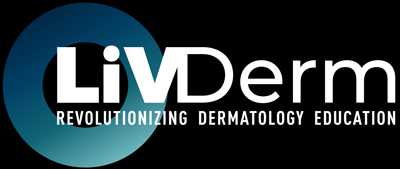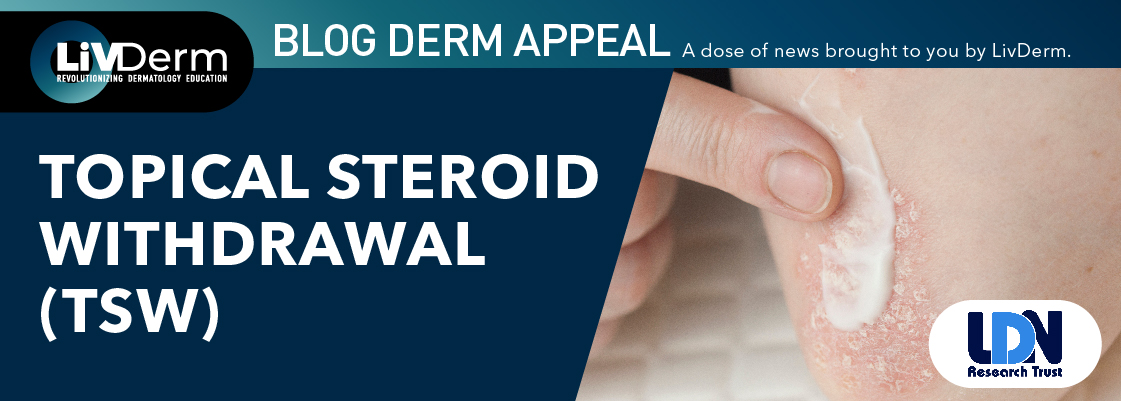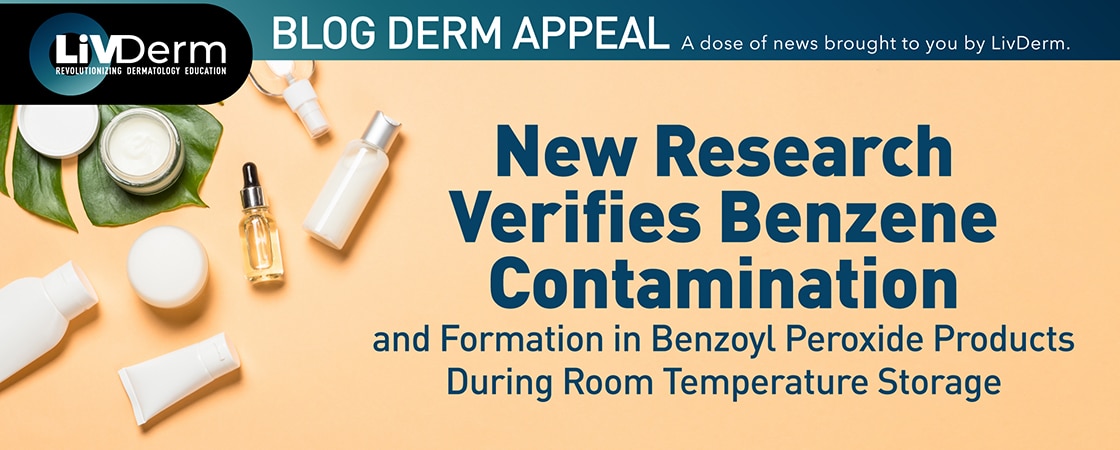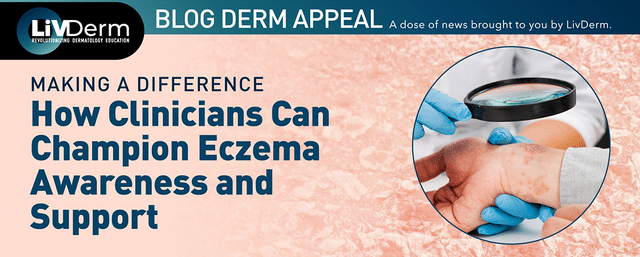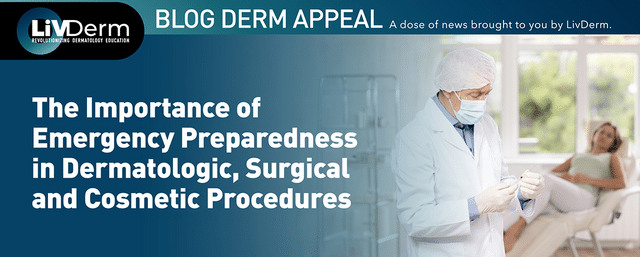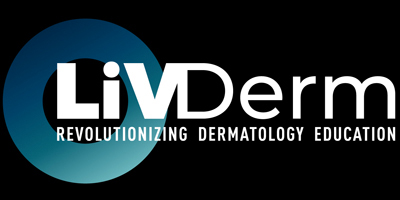There is a need to raise awareness about topical steroid withdrawal (TSW), a serious potential side effect of topical steroid use. TSW is not always recognized by patients or practitioners as much is still unknown about this consequence of using topical steroids, particularly in the long term.
What are skin conditions?
Common skin conditions are inflammatory in nature, the most common being eczema, seborrheic dermatitis, and psoriasis. All of these conditions are very uncomfortable, both physically and mentally. These skin conditions present as rashes which can be smooth or scaly, flat or raised, blisters, thickening skin, cracked skin, redness, and give sensations such as burning, stinging, or itching.
What causes them?
Some potential causes of skin inflammation are immune system dysfunction, allergic reaction, bacterial, fungal or viral infection, photosensitivity, heat, and other factors such as a possible genetic predisposition.
What is the usual treatment?
The usual treatments are topical creams which are applied directly to the skin. These are hydrocortisone/corticosteroid creams to reduce inflammation, antibacterial or antifungal creams if the rash is caused by infections and calamine lotion.
Potential side effects of corticosteroid creams are:
- Burning or stinging sensation initially usually improves as treatment progresses
- Folliculitis (inflamed hair follicles)
- Excessive hair growth in the treated area
- Rosacea (face redness)
- Changes in skin color (more pronounced in darker-skinned people)
- Acne or worsening of existing acne
- Stretch marks which can be permanent
- Contact dermatitis, facial swelling, difficulty breathing – caused by an allergy to the medication
- Thinning of the skin in the treated area makes the skin more vulnerable to damage
- Worsening of the skin condition
It has been noted that the elderly and very young are more vulnerable to side effects. Long-term use over a large area, particularly with the more potent topical corticosteroids, can present a risk of the medication being absorbed into the bloodstream, causing possible decreased growth in children and Cushing’s Syndrome. This disorder occurs when your body makes too much of the hormone cortisol over a long period of time.
Long-term use of corticosteroids can cause a withdrawal reaction when treatment is stopped. These reactions can be quite severe and include redness and skin color changes and burning, itching, stinging, and peeling of the skin with oozing open sores. Other symptoms of withdrawal can also include insomnia, fatigue, hair loss, chills, and depression. There is also a risk of adrenal crisis with the sudden withdrawal of topical steroids if the adrenals become severely depressed.
Topical Steroid Addiction (TSA) describes the origin of TSW syndrome. The term addiction is used to describe the situation of increased tolerance to topical steroid creams whereby the patient needs more of the cream to achieve the same benefit. On decreasing or withdrawing treatment, the symptoms return with greater severity.
Do doctors know about the side effects?
Dermatologists do not always recognize topical Steroid Withdrawal as it remains an emerging diagnosis. The condition is said to be relatively rare, and there are no set diagnostic criteria.
What is done about the side effects?
Common potential treatment options include: Gradually stopping topical steroid creams, immediately stopping topical steroid creams, taking oral corticosteroids for a few weeks, cold compresses, taking antibiotics to help manage the risk of increased infection, and having an injection of dupilumab which is a recombinant human monoclonal antibody that inhibits interleukin-4 and interleukin-13 signaling, this, of course, comes with its own side effects.
Papers written about TSW
Many papers are written about TSW, and the general conclusion is that TSW is likely a consequence of topical corticosteroid misuse.
What other treatments are available for skin conditions?
There are many treatments for skin conditions other than steroids, including:
- Topical treatments: Antibacterials, Anthralin, Antifungals, Benzoyl peronside, Coal tar, Non-steroidal ointments such as Eucrisa and Protopic, Retinoids, and Salicylic acid.
- Oral or injection treatments include: Antibiotics, Antifungal drugs, Antiviral drugs, Immunosuppressants, Biologics, Enzyme inhibitors, and Retinoids. All come with varied efficacy and possible side effects.
- There are even psychological interventions to treat dermatologic problems as the nervous system can influence skin conditions through psychoneuroimmunoendocrine mechanisms and behaviors.
- Herbal medicine has been used for thousands of years. There are many other natural remedies with possible efficacy, which would very much depend on a patient’s particular symptoms.
- Phototherapy is also a treatment option for conditions such as psoriasis, vitiligo, and severe eczema. This works by reducing the local immune system in the skin, slowing the development of thick, scaly skin, such as psoriasis. Typically administered three times per week, improvements should be seen within a fortnight. For psoriasis, it is expected that 15 to 20 treatments will be needed to achieve a good result with a remission rate of 38% after one year. For eczema, the treatment could continue for a few months before remission is realized, stopping the treatment to see whether full remission is in fact achieved. Most people who respond well to phototherapy can expect to remain in remission for several months. Phototherapy treatments have side effects such as premature skin ageing, photosensitive skin eruptions, skin tenderness, and skin cancer. However, it is thought to take at least 300 treatments before this becomes a real risk. Most treatments are between ten and twenty sessions.
- Low dose naltrexone is a reversible competitive antagonist which blocks the opioid receptors transiently. This causes a positive feedback mechanism to increase the production of endogenous opioids (endorphins). The levels of endorphin and enkephalin are raised persistently, and these endogenous opioid peptides promote healing, inhibit cell growth and reduce inflammation. Given that many dermatologic conditions are autoimmune modulating the immune system to calm the reactions caused by an overzealous immune response to triggers would seem sensible. Low dose naltrexone is a novel anti-inflammatory, immune system modulator.
- Opioid receptors are found throughout the skin and affect cell proliferation, migration, and adhesion. Opioid receptors have been found in all layers of the epidermis, while δ receptors are concentrated at cell junctions and can reduce desmoglein expression. Typical doses of naltrexone result in continuous binding to receptors. Low doses result in intermittent blockade with increased ligand and receptor expression, potentiating their effect.
- Large-scale trials are sparse in relation to LDN. Generally, trials are expensive, and there must be profits envisaged for a drug to go to large-scale clinical trial. Low Dose Naltrexone was discovered by Bernard Bihari almost 40 years ago. It is an inexpensive treatment and will never make the pharmaceutical companies the profits they desire; therefore, we rely on case studies to assess Low Dose Naltrexone for many autoimmune issues, including dermatologic conditions.
There are many published studies that bring hope to those suffering from dermatological conditions
In October 2017, Omer Ibrahim et al. published a study in JAMA Dermatology of three patients with biopsy-proven recalcitrant Hailey-Hailey Disease, a rare and debilitating genetic dermatosis characterized by chronic, recurrent vesicles, erosions, and maceration in flexural areas. All were treated with 1.5 mg to 3.0 mg per day. Each patient exhibited at least an 80% improvement in extent of disease, with one patient demonstrating 90% clearance. All 3 patients had substantial improvement in quality of life, with one patient reporting improvement in his depression. No adverse effects were recorded.
In September 2018, Alanna C. Bridgman and Mark G. Kirchhof published a case study of a 60-year old lady who presented with a history of generalized plaque psoriasis covering 10% of her body. The patient reported symptoms of pruritis but no pain. The patient was initially treated with UVB phototherapy supplemented with clobetasol ointment (a steroid cream). After concerns about long-term steroid treatment and the inconvenience of 3 times weekly UVB for 6 months, the patient wanted to try Low Dose Naltrexone. The patient had done her own research and suggested it to her doctors. The patients’ psoriatic lesions were significantly improved at 3 months into treatment with LDN. At six months, the body surface area affected by psoriasis was reduced from 10% to 1%, the pruritis also improved. No side effects were reported with LDN treatment, and the patient continues to take LDN therapy with continued success.
A larger case study by Leonard Weinstock et al. shows a series of case studies of 15 individuals who had psoriasis for a mean duration of 16 years. Eight patients also had Psoriatic Arthritis (PsA). Of the fifteen patients, eight showed a marked improvement (53%), two of the fifteen had some improvement, and five remained unchanged. One gentleman, who had had plaque psoriasis (6% BSA) for 12 years, psoriatic arthritis (PsA) with a VAS pain score of 9/10, had been troubled with abdominal pain for 20 years. He had a marked improvement in the psoriasis (BSA from 6% to 1%). PsA also improved to a VAS pain score of 1/10 and complete elimination of gastrointestinal symptoms after only 2 months of LDN treatment. After 12 months, the patient discontinued LDN, and within one month, his psoriasis, PsA, and abdominal pain returned. Within one month of restarting LDN, all three conditions quickly responded.
Four Lichen Planopilaris patients were treated with Low Dose Naltrexone at 3 mg per day. All four patients benefitted from LDN with a reduction in symptoms of pruritus, clinical evidence of inflammation of the scalp, and disease progression. All patients tolerated naltrexone without adverse effects.
In another study of, three patients treated with LDN for Pruritus in Systemic Sclerosis (SSc) also had good results from LDN for their pruritis within two months; two found that their pruritis was completely resolved and the third somewhat resolved. All patients found that other symptoms such as constipation and distention/bloating also improved. The conclusion of the study states that this case study series suggests LDN may be an effective, highly tolerable, and inexpensive treatment for pruritus in SSc.
A double-blind, placebo-controlled study on pruritis in atopic eczema in thirty-eight patients with eczema concluded that naltrexone was significantly more effective after only one week than placebo. The VAS score reduced further in week two. The authors conclude that naltrexone might be considered an adjunct treatment and that further studies were highly recommended. Although it is noted that the dosage given in this study was much higher than generally used by practitioners who understand the benefits of low doses of naltrexone.
There are many small studies on the use of Low Dose Naltrexone for many autoimmune conditions, including cancers, and all end with the conclusion that larger studies are warranted as this safe, effective and inexpensive drug can have benefits to many patients for whom conventional treatments fail. For many, those benefits have been life-changing.
This article was originally written by Paula Johnson for the LDN Research Trust in April 2022.
Sources:
- Angela Ballard, “TSW: What the Eczema Community Needs to Know, Now,” National Eczema Association (May 2021): https://nationaleczema.org/tsw-need-to-know/
- NHS, “Topical Corticosteroids,” NHS website, https://www.nhs.uk/conditions/topical-steroids/
- Belinda Sheary, “Steroid Withdrawal Effects Following Long-term Topical Corticosteroid Use,” Dermatitis 29, no. 4 (2018): 213-8, https://doi:10.1097/DER.0000000000000387
- S Behring, “Topical Steroid Withdrawal (TSW) and Eczema: What You Need to Know,” Healthline (August 2021): https://www.healthline.com/health/eczema/tsw-eczema#what-it-is
- ITSAN, “What is TSW Syndrome?” The International Topical Steroid Awareness Network, n.d., https://www.itsan.org/what-is-tsw-syndrome/
- TSAN, “What is TSW Syndrome?,” Topical Steroid Addiction (TSA), The International Topical Steroid Awareness Network, n.d., https://www.itsan.org/what-is-tsw-syndrome/
- Abi Miller, “Can Your Skin Really Get Addicted to Steroid Creams?,” Patient (July 2018): https://patient.info/news-and-features/topical-steroid-withdrawal-addiction-red-skin-syndrome
- NICE, “Dupilumab,” National Institute for Health and Care Excellence, n.d., https://bnf.nice.org.uk/drug/dupilumab.html
- Tamar Hajar et al., “A Systematic Review of Topical Corticosteroid Withdrawal (“Steroid Addiction”) in Patients with Atopic Dermatitis and Other Dermatoses,” Journal of the American Academy of Dermatology 72, no. 3 (March 2015) 541-49, https://doi:10.1016/j.jaad.2014.11.024
- Medically Reviewed by Stephanie S. Gardner, “Medications for Skin Conditions,” American Academy of Dermatology (April 2021): https://www.webmd.com/skin-problems-and-treatments/medications-skin-conditions
- Philip D Shenefelt, “Psychological Interventions in the Management of Common Skin Conditions,” Psychology Research and Behavior Management 3 (March 2010): 51-63, https://doi:10.2147/prbm.s7072
- Philip D. Shenefelt, “Herbal Treatment for Dermatologic Disorders,” Herbal Medicine: Biomolecular and Clinical Aspects. 2nd edition(2011): Chapter 18, CRC Press/Taylor & Francis; https://www.ncbi.nlm.nih.gov/books/NBK92761/
- Jennifer Berry, “Top 12 Natural Remedies for Eczema,” Medical News Today (November 2021): https://www.medicalnewstoday.com/articles/324228
- Charlene V. Kakimoto, “What is Phototherapy, and How Does it Work?,” Chief Medical Officer, Clarify Medical (November 2017): https://www.dermatologistoncall.com/blog/posts/what-is-phototherapy-and-how-does-it-work/
- Matt McMillen, “Does Phototherapy for Severe Eczema Work?,” HealthCentral (September 2021): https://www.healthcentral.com/article/phototherapy-for-severe-eczema
- Admin, “Does Phototherapy Cause Skin Cancer?,” The Harley Street Dermatology Clinic (October 2018): https://www.theharleystreetdermatologyclinic.co.uk/skin-cancer/phototherapy-cause-skin-cancer/#:~:text=Phototherapy%20can%20cause%20some%20minor,including%20BCC%2C%20SCC%20and%20melanoma)
- Norman Brown and Jaak Panksepp, “Low-Dose Naltrexone for Disease Prevention and Quality of Life,” Medical Hypotheses 72, no. 3 (March 2009): 333-7, https://doi:10.1016/j.mehy.2008.06.048
- Pradeep Chopra, “Mechanism of action of Low Dose Naltrexone (LDN),” PowerPoint Presentation Brown Medical School, Rhode Island, https://ldnresearchtrust.org/sites/default/files/LDN_Mechanism_Of_Action_Pradeep_Chopra_MD.pdf
- Brigette Lee and Dirk M Elston, “The Uses of Naltrexone in Dermatologic Conditions,” Journal of the American Academy of Dermatology 80, no. 6 (June 2019): 1746-52, https://doi:10.1016/j.jaad.2018.12.031
- Omer Ibrahim et al., “Low-Dose Naltrexone Treatment of Familial Benign Pemphigus (Hailey-Hailey Disease),” JAMA Dermatology153, no. 10 (October 2017): 1015-17, https://doi:10.1001/jamadermatol.2017.2445
- Alanna C. Bridgman and Mark G. Kirchhof, “Treatment of Psoriasis Vulgaris Using Low-Dose Naltrexone,” JAAD Case Reports 4, no. 8 (September 2018): 827-9, https://doi:10.1016/j.jdcr.2018.06.001
- Leonard Weinstock et al., “Low Dose Naltrexone Therapy for Psoriasis: Open Label Case Series,” Power Point Presentation, Washington University St Louis, n.d., https://sa1s3.patientpop.com/assets/docs/255357.pdf
- Lauren C Strazzulla et al., “Novel Treatment Using Low-Dose Naltrexone for Lichen Planopilaris,” Journal of Drugs in Dermatology 16, no. 11 (November 2017): 1140-42, PMID: 29141063
- Tracy Frech et al., “Low-Dose Naltrexone for Pruritus in Systemic Sclerosis,” International Journal of Rheumatology 2011 (September 2011): Article IS 804296, https://doi:10.1155/2011/804296
- F Malekzad et al., “Efficacy of Oral Naltrexone on Pruritus in Atopic Eczema: A Double-Blind, Placebo-Controlled Study,” Journal of the European Academy of Dermatology and Venereology 23, no. 8 (August 2009): 948-50, https://doi.org/10.1111/j.1468-3083.2009.03129.x
